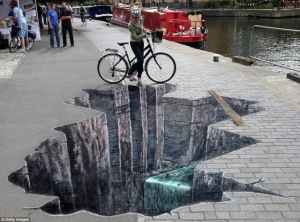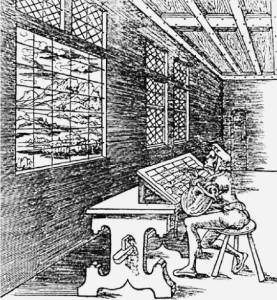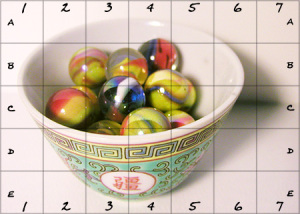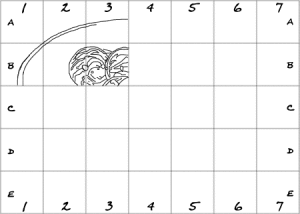Innovation

Tornatzky and Klein looked at 75 articles in an attempt to predict when an idea or product would be adopted.
They discovered problems with the studies. One is that few of the studies looked at the implementation after adoption and another is that some of the studies relied on inference instead of “direct measurement” (32). Based on their meta-analysis, they concluded that the three most-commonly needed characteristics regarding adoption were compatibility, relative advantage, and complexity.
Compatibility is “the degree to which an innovation is perceived as being consistent with the existing values, past experiences, and needs of the receivers” (33).
Relative advantage is “the degree to which an innovation is perceived as being better than the idea it supersedes.” The authors say this characteristic is too broad and “amorphous” (34), yet their conclusion lists it among the top 3.
Complexity does not need defining as it entails the level of difficulty in using the new idea or product.
The results of this study indicate that more research needs to be done with tighter parameters and better-defined criteria. In our own classrooms, we should not just add something because it is novel; instead, we need to look for measurable results we can get from the implementation and be sure to implement things that are not so difficult to use that the content gets lost.
Remediation: Understanding New Media
The focus of this book involves three traits that come together: Immediacy, hypermedia, and remediation. The first two are considered “double logic” (viii) and a “contradiction . . . [of] two logics of mediation” (ix). Remediation comes from Sandra Beaudin’s notion of “repurposing” (viii).
The authors explain the double logic of remediation in that “[o]ur culture wants both to multiply its media and to erase all traces of mediation: ideally, it wants to erase its media in the very act of multiplying them” (5). The authors use the examples of live documentaries to make the audience feel like they are there in the midst of the action, yet in order to jump into the action, we are dependent upon the media. So at the same time we want to ignore the medium, we are dependent upon it.

Immediacy is not new; the authors showcase various media which attempt to “ignor[e] or den[y] the presence of the medium and the act of mediation” (11) from virtual reality (24) to the painter who tries to “erase his brush strokes” (25) so that the viewer can see THROUGH the medium. Immediacy is also understood as transparency.
Hypermedia is not new either; “integration of text and image” (12) has been around for centuries as is evidenced by the elaborately decorated medieval manuscripts (13) or a Coney Island postcard from the early twentieth-century (14). These authors have even attempted to create a “hyplerlinked” textbook by providing page references to concepts which appear in multiple locations of the book.
Bottom line: even though we are tempted to view today’s media as New and Improved, it still depends upon the media which came before it. No medium can stand in isolation.
The goal of immediacy is to “foster in the viewer a sense of presence” (22), but if we take this to its logical extreme, we could end up like the character Mal in the movie Inception; if we think we are only “virtually” existing and try something risky yet we are committing this act in reality, then we could harm ourselves or others. Mal is unable to differentiate between reality and dreams so she ends up killing herself. Another extreme end of not seeing the interface as interface (removing the medium) could put us in the position of the characters in the movie I, Robot where the main frame V.I.K.I. is given responsibilities usually designated to humans which results in her turning against humans because they have the capability of harming each other. As a computer, “she” could not break the cyclical thinking that was programmed into her.
Thankfully we do have such technology that works toward immediacy; otherwise, I would not be using WebEx to take this class!
Many people seek “immediacy through the interplay of the aesthetic value of transparency” (24) such as those who desire art to look realistic. One method of obtaining such a product was the “Cartesian perspectivalism” or Albertian window which used the geometric ideas of grids to help the artist view his image in the correct perspective so he could translate it onto the canvas by only drawing in one grid at a time.
Even as painters continued to try to erase themselves from their finished work – even by working to eliminate brush strokes (25) – an astute viewer could still see the artist through his skillful work. Thus, anyone who claims that we can erase the author/creator, is mistaken.
The ultimate artistic transparency is trompe l’oeil (30), but viewing these creative masterpieces correctly still requires the correct perspective and a “willing suspension of disbelief” on the audience’s part in order to see past (or through) the medium.


One loose definition of immediacy (it makes sense in my brain) is not only instant, but also “im-“ (prefix meaning not) “mediated” (physically represented); therefore, immediacy could be defined as “not physically represented.”
On the other end of the spectrum is modernist art like Van Gogh’s with painters who wanted their medium to take center stage by showing off the brush strokes. Such artists would probably prefer hypermediation, where multiple forms of media are utilized (32-33, 38).
Thus we have the paradox of these two Alter Egos: Hypermedia = viewable; immediacy = transparent
Enter Remediation (or repurposing or representing one medium in another) (44); newer media are dependent on older media. This does not usually describe a replacing, though some digital medium can try to “refashion” and take an older medium out of context (46). Generally remediation “absorbs” the older medium (47). Thus, in examples like many news stations (CNN, etc.) the television and the web media try to remediate each other (47). As older forms of virtual reality are replaced by more effective means, remediation becomes important for transparency (48). Digital media will never make a complete break from previous media; remediation (repurposing) will always be involved (49-50). The more that the viewers or “interactors” desire a feeling of immersion (91), the more important perspective becomes.
Bibliography:
Bolter, Jay David, and Richard Grusin. Remediation: Understanding New Media. Cambridge, MA: MIT P, 2000. Print.
Tornatzky, Louis G. and Katherine J. Klein. “Innovation Characteristics and Innovation Adoption-Implementation: A Meta-Analysis of Findings.” IEEE Transactions on Engineering Management 29.1 (Feb. 1982): 28-45. GoogleDocs. Web. 29 Sept. 2014.
I responded to Dan’s How We Became Posthuman Part 1. In addition to thinking about what it would be like to be completely “informationless” (consider how Helen Keller must have felt before Anne Sullivan helped her “break through” to communicate), his summary also got me thinking about the human desire toward immortality. If we can exist outside this flesh, then we can live forever (like what I expect the movie Transcendence to be like). Just this week, I heard that a company is trying to gain the rights to create holograms of Marilyn Monroe, who like Michael Jackson just may be able to “live” again. This concept connects to the book I’m reading on Remediation; older forms of media are being re-purposed to creating something new and improved.
While we may get the impression that these people are “living,” that is merely an impression. Michael Jackson and Marilyn Monroe are still dead people. What we are really saving are memories, and only those people who are still alive get to enjoy the memories (the perception of a person living again). This saving of memories is not the same as living forever.
Since Camille and I are going to be collaborating on the same book, I also commented on her page. She takes the ideas of immediacy and hypermediacy and provides examples of each, which helps to clarify the concepts. I have yet to share with Camille my connection between remediation and the holograms of Michael Jackson and Marilyn Monroe. While I do find these concepts interesting, I can’t help but question where they will lead. Hypermedia (too much media in some cases) can distort the message, while immediacy (pretending that media doesn’t exist) can mislead us into thinking something mediated is equivalent to the reality that we experience, not just its own reality as a mediated thing. I don’t know if these ideas are supposed to lead to a specific conclusion, but I have to admit that I’m getting used to “hypotheticals” running around in my head.



Great job focusing on identifying and defining terms. Always useful when you refer to these posts later.
Ramona,
Awesome post and it seems as if you are progressing just fine with all this new media stuff. You make a lot of insightful points about your book; I was especially fascinated by your analysis on our love/hate relationship with the media that we use, specifically their material presence. Bolter and Grusin’s statement about us trying to “erase all traces of mediation” made me think about the evolution of the size of the cell phone. I remember my grandmother’s first one, an object that could easily been used as a personal weapon. Through the years, the cell phone has been shrunk considerably, now easily fitting into a pocket or purse. It seems we have been able to at least minimize some traces of this remediation, and the wrist phone seems to be the next phase of smart phone reduction.
Fantastic notes, Ramona! I loved your use of images in order to better demonstrate the concepts the authors were talking about, as well as your examples from popular culture. Your points about immediacy, hypermedia, and remediation are all topics that come up again and again in video game studies, and your clear definitions are going to help me in moving forward.
Having read Remediation last year, one of the take-aways points I was left with, and the question I am about to pose to you, is this: what, if anything, might be lost in the remediation process?
Take, for example, the use of a digital picture of the Mona Lisa. Most of us haven’t ever seen it in person. For us, it’s an image with a high resolution, one where we can zoom right in and view it as it its physicality was yards long. Yet, the actual size is pretty small: 30 inches by 21 inches.
By remediating it, though, we often strive towards the erasure of the traces of its materiality. But, in doing that, are we losing something too?
(There isn’t a good answer to this. It’s a problem archivists face on a regular basis.)
Musically, this is a debate that surrounds MP3s as self-proclaimed music aficionados argue there is detectable sound degradation in this format and music therapists advise against using MP3s as educational or therapeutic tools for sound-sensitive children. MP3s are seen as more portable, but less “real” than vinyl or reel-to-reel recordings that have ambient crackles or hums that capture the creative experience of the musicians in the studio.
I have never thought of the word immediacy in the terms you explained it here–not physically represented, with the goal of “foster(ing) in the viewer a sense of presence.” As a former art teacher, I really understood the concept once you connected it to visual art. The viewable vs. transparent paradox mades sense when you made the Van Gogh/hypermedia/multiple forms link. For me, this worked because you linked a concept that’s familiar (at least to me) –Van Gogh–to a term that’s unfamiliar: hypermedia. I think that thought of new concepts being understood based on our prior knowledge explains the reason that new media is dependent on old: the old establishes a framework which is is folded in (absorbed) when a new concept (technology) is added to what we know.
I am glad that we are working through the same book as I value the ways in which you work through the same examples. While I was more drawn to photography and music in my remediation examples, you were more drawn to art. Fantastic! I did not consider the layers of meaning behind trompe l’oeil art. This art form perfectly illustrated the competing ideas: “Thus we have the paradox of these two Alter Egos: Hypermedia = viewable; immediacy = transparent.” It seems that there is a moment when trompe l’oeil is valued for its immediacy, but then reevaluated and raised higher when recognized for its hypermediacy. The images of dangling figures or busted pipes drawn on sidewalks are awful or dangerous when viewed as immediacy; however, they are entertaining, complex, and interesting when seen as hypermediated drawings.
I’ve had to read excerpts from this text in several classes, but I have never taken the time to read the entire text. I really appreciate the examples you provided for immediacy. I never thought about Inception or I, Robot as examples of immediacy. This helped me with understanding immediacy as a push towards a sense of presence and the connection between immediacy and interface. They both, in their most effective forms, push towards transparency.
Chvonne, glad I could help! I’m also glad you could make some sense of my “ramblings!” 🙂